
Urals Cossack Cavalry
The Urals fielded an army firmly based on Cossack cavalry.
8th Urals Cossack Regiment
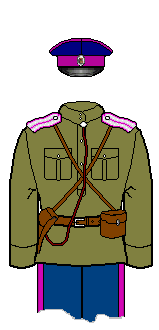 |
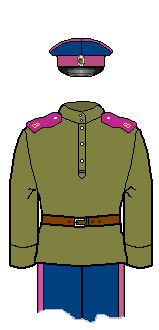 |
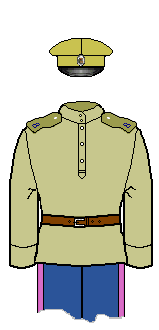 |
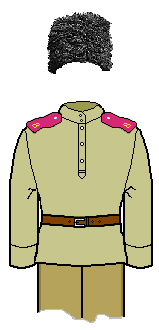 |
| Officer | Trooper | Trooper field dress | Trooper field dress |
The Host colour for the Urals was "raspberry", often translated as crimson in texts. The shade in question was a more a dark pink than a red. Old materials suggest it often faded to a paler version.
We know that the Urals suffered particularly badly from supply issues. The rank and file were often extremely poorly kitted out for most of the war. Only the training regiments were dressed at all smartly (possibly in English uniforms).
However, earlier in the war, they certainly wore their host colours. There are two reports from 1918
"Crimson epaulets, cockades, white armbands on the left sleeve. The officers wore shoulder straps. Their flags were a crimson color."
"I saw Cossacks with my own eyes on a summer morning in 1918, with my head out of the gate on Nikitin street. Bearded and without hair, in caps with crimson bands, in wide trousers with crimson stripes, they slowly rode on horseback."
Like all steppe Cossacks the Urals cavalry used lances in the front rank, with the rear rank using sabres.
Uniform Details
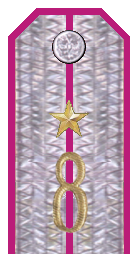 |
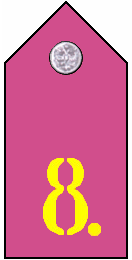 |
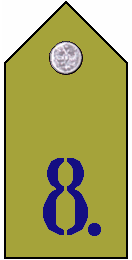 |
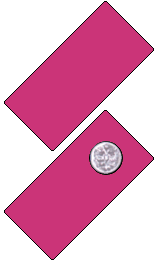 |
| Shoulderboards: Ensign | Shoulderboards: Trooper | Shoulderboards: trooper field version | Greatcoat collar tabs |
Dress shoulderboards were raspberry. Buttons and officer lace were silver. Officer's monogram and rank markings were in gold, and for troopers in yellow.
Field shoulderboards had the number stencilled or inked in dark blue.
It appears that all the Urals cavalry had a straight number for their cipher in WWI. Fighting as a fully separate army there seems to be no reason why this would have changed in the Civil War.
 The furazhka peaked cap had blue crown and raspberry band and piping. The papakha had a raspberry cloth with a white/silver cross for officers. The field version was plain khaki, although officers might have a cross in white. It seems the farther east the Cossacks the larger and shaggier the fur hats, so the Urals host was presumably not clad in the low models seen in the Don and Kuban.
The furazhka peaked cap had blue crown and raspberry band and piping. The papakha had a raspberry cloth with a white/silver cross for officers. The field version was plain khaki, although officers might have a cross in white. It seems the farther east the Cossacks the larger and shaggier the fur hats, so the Urals host was presumably not clad in the low models seen in the Don and Kuban.
There is a reference to the Urals Cossacks wearing shoulderboards while serving with KOMUCH forces, which would indicate they wore them from the start of the Civil War. There is also a reference to them wearing coloured cap bands and trouser stripes in June 1918.
Very late in 1919 a few units were dressed in British uniforms.
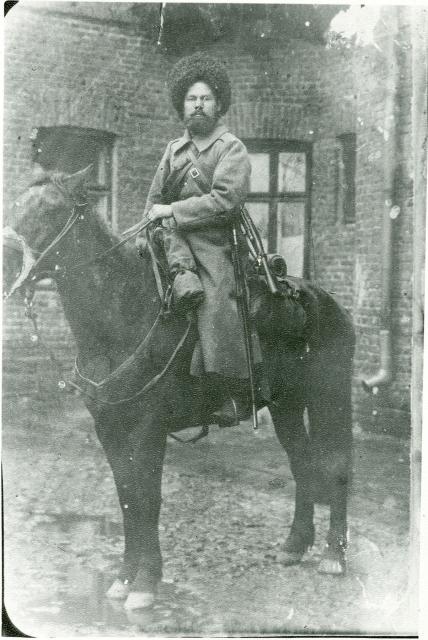
A Gureiv Cossack (source pohodd.ru)
History in the RCW
The 8th Regiment was originally part of the 3rd Urals Cossack Division, and then the 4th Division after the Spring 1919 reformation. It seems to have fought in the Iletsk area. This part of the front covered a wide area, and it seems the units were often quite dispersed, but the 8th spent much of the war alongside the 16th Urals Cossack Regiment and the 13th Orenburg Cossack Regiment.
At the end of 1918 its strength is given as 7 sotnias, 534 sabres and 4 MGs (the seven sotnias is odd, since Imperial practice was only to have six). After the army revision of spring 1919 it had six sotnias, with 5 officers, 405 sabres and 10 MGs.
Flags
The Imperial 8th Urals Regiment had a 1883 Model flag from 1891. A gilt tape was tied to the pole with a bow at the top. It would have looked something like this (not sure which saint they had):
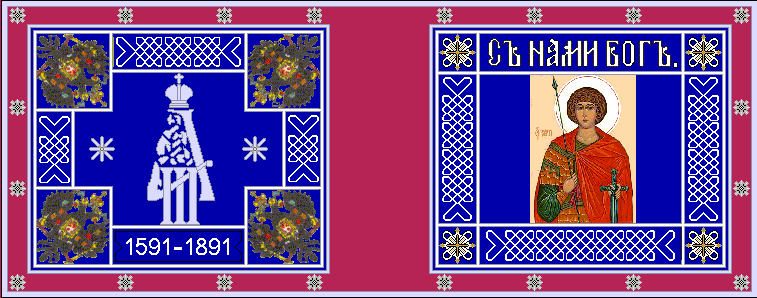
(The 1st to 9th Urals Regiments all had similar flags. Only the saint would differ.)
The official HQ WWI field flag for all Cossack regiments was a red diamond inside blue with the unit's number and distinguishing letters.
The official WWI battle standard was a raspberry square with the unit's number in yellow. This style of flag was definitely carried over into the RCW in other hosts (admittedly with quite a lot of deviation in lettering and edging) and there is a mention of raspberry flags in the RCW.

Imperial sotnia flags had raspberry on top, and sotnia colours underneath:

Other Similar Units
It is hard to see other Urals units varying in major respects, apart from some different ciphers perhaps. In order to distinguish the various 1st and 2nd regiments it would make sense to add a П for partisan units or Ч for training units.
A Urals Cossack unit fought in the early days with Kappel', two sotnias are listed with him in July 1918.
Photos
There are very few photos from the Urals of this period.
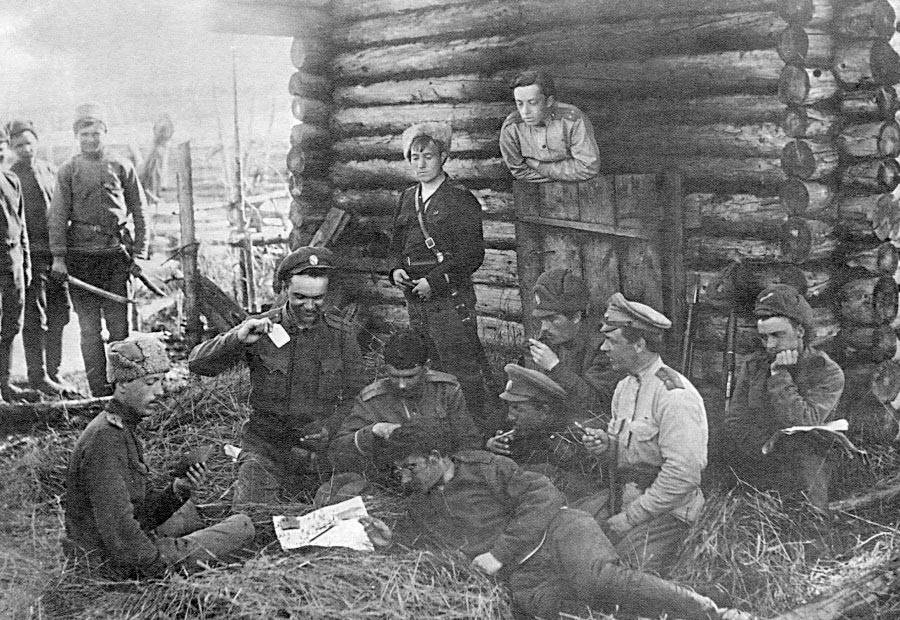
Urals Cossacks in Lbishhensk. Late war judging by the hats.